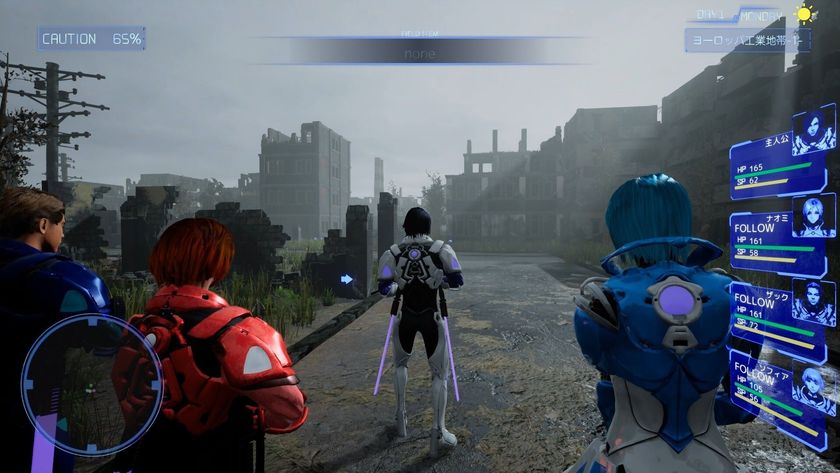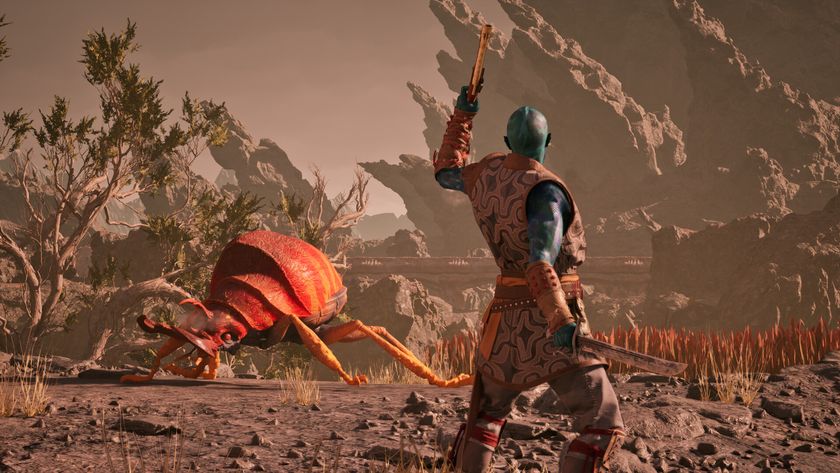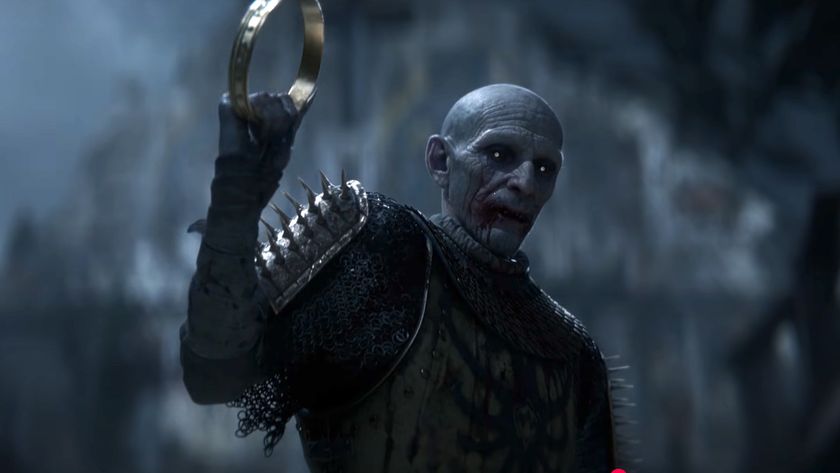30 years of Game Boy: How Nintendo's modest handheld became a such a massive success
Retro Gamer reflects on the 30th anniversary of the Game Boy with developers that were there at the time
Small screen, big ambitions
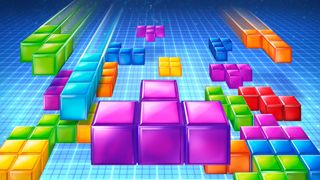
Due to the Game Boy’s small screen and limited colour palette, it was the job of artists to ensure that the graphics, and in particular sprites, were as clear and defined as possible. It was a challenge that Elliot Curtis relished. Working for Tiertex Design Studios, he created Game Boy graphics for various Disney licences and FIFA entries. "To be offered the chance to make games on a console was a dream," says Curtis. "Yes the Game Boy was limited but the other consoles at the time were actually a bigger struggle to create graphics for. The first time you created a sprite and saw it running on a Game Boy screen was amazing. It always looked way better than it did in Deluxe Paint!"
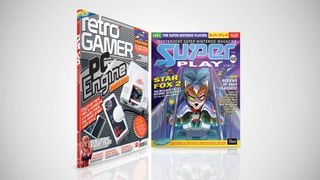
Get every monthly edition of Retro Gamer, the award winning guide to classic video games, delivered straight to your door for less than £4 an issue
The biggest headache occurred when creating full-screen images, such as title screens, due to display limitations. "A Game Boy screen is divided into an eight-by-eight grid and each square in that grid is a character," he explains. "When you create a full-screen picture you can actually only use about 21 unique characters. It was nowhere near enough. We had tools from the coder to highlight individual characters once we drew anything, and then we had to be creative by using flipped and rotated characters within the picture. It’s always depressing butchering a nice picture but often it was required assets for a licence and there wasn’t any scope for creativity. Publisher or licence logos are boring enough to draw without spending all day editing them to make them actually work on the screen."
Curtis' later games were specially optimised for use with the Super Game Boy, the device that enabled Game Boy carts to be played on the Super Nintendo console, often with added colour. Explaining the process, Curtis says: "Colour would be designed into the graphics from the start. I would have four separate palettes of four colours each. I used to work on the Spectrum so the eight-by-eight character colour issues weren’t new to me, but Super Game Boy graphics were a pain. The number of people who were ever going to actually see them was so small it seemed like a bit of a waste of time. I actually put a footballer in the border for FIFA 98 in a Watford strip and got away with it!"
Super Game Boy games at least looked better in magazines – as anyone who tried to screen-grab original Game Boy titles will tell you. Nick Walkland worked on Europress’s GB Action, the UK’s first dedicated Game Boy magazine which debuted in 1992. "Game Boy games were a complete pain to screen-grab," says Walkland. "We actually took photos because it was so tricky. The Game Boy was placed in this glorified cardboard box, with a black cloth around the entrance, which you put your head inside. Like a Victorian snapper but without the phosphorous flash. But there was always motion blur and when you tried to pause games they tended to come up with a pause screen. To make matters worse the Game Boy looked, well, awful. A bland greeny-grey, with shades in-between."
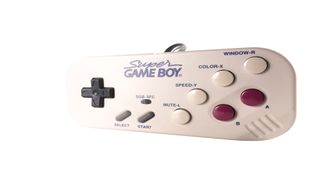
Walkland is not alone in his lack of love for the Game Boy. "It was awful!" laughs Ed Magnin, a programmer who’d previously worked for MicroProse and Cinemaware on Apple II and IIGS software before moving onto the Game Boy at Virgin Games. "The processor was like a Z80 but it wasn’t a complete one, and there were banks of memory and the memory had to be switched in and out. So if you had a piece of artwork it wasn’t just a question of whether it would fit into the cartridge, but where you had a hole to put it where it wouldn’t straddle banks. You know, up until the Nintendo DS, I’ve always said that it was our job as programmers on Nintendo platforms is to make bad technology look better than it should have."
"Up until the Nintendo DS, I’ve always said that it was our job as programmers on Nintendo platforms is to make bad technology look better than it should have.”
Ed Magnin, programmer
Despite his aversions, Magnin was responsible for the fantastic and faithful Game Boy version of Prince of Persia. For this he also had to contend with Nintendo's famously dim view on video game violence. "Nintendo had these policies in place where no-one ever died in a Nintendo game," he says. "So for Prince of Persia the first thing we looked at was the slicer. We raised this and Nintendo said it was okay as long as we didn’t show any blood. Even on the Game Boy they didn’t want a big black puddle oozing out! The pop-up spikes on the floor were also a problem. Years later I found out that Nintendo didn’t like what it called ‘body deforming violence’. It was okay to get killed but not have the spikes popping out of your back.”
For Magnin and other developers, whether they were fans of the hardware or not, it was clear that Nintendo had devised a hugely popular platform. The Japanese firm had hit gold with the Game Boy. "It was my daughter who actually got me started on Nintendo," says Magnin. “She was in kindergarten and I was out of work as the company I’d just finished a game for had gone out of business. It was hard to find a job and my daughter said ‘Dad you should be doing Nintendo!’. And she was right. All of the kids had one!"
Sign up to the 12DOVE Newsletter
Weekly digests, tales from the communities you love, and more
Fighting off the competition
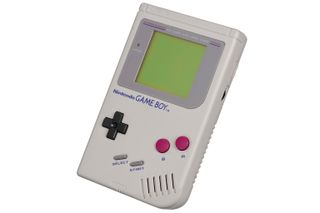
The Game Boy quickly established itself as the world’s number one handheld, and this was in the face of competition from rival machines that arrived shortly after. The Atari Lynx, Sega Game Gear and PC Engine GT (TurboExpress), with their colour screens and superior hardware, looked like a clear generational leap over the Game Boy. It really was men against boys, on paper at least. But the Game Boy subverted expectations and emerged as the clear winner.
The reasons for its success are fourfold. Firstly, the Game Boy was the fastest to market so it was the first portable to capture the interest and imagination of the public. And not only was it first but it was the least expensive too. Prices obviously varied from region to region, but in anyone’s language the Game Boy undercut the competition significantly. Further discounting would push the Game Boy towards an impulse purchase price point. The third factor was battery life. Four AA batteries would power the Game Boy for up to 15 hours (and possibly longer if the speaker wasn’t too troubled). Rival handhelds were much hungrier, requiring more batteries and exhausting them far sooner. Having to continually buy or recharge batteries was never ideal.
"More than 700 titles were released over a period of ten years. Third-party production was plentiful and Nintendo itself continued to support the machine throughout its lifespan"
Finally, and crucially, there was the Game Boy’s vast library of games. More than 700 titles were released over a period of ten years. Third-party production was plentiful and Nintendo itself continued to support the machine throughout its lifespan. Three Super Mario Land sequels appeared in 1992, 1994 and 1998, while the release of The Legend Of Zelda: Link’s Awakening in 1993 showed that the Game Boy could deftly entertain sprawling adventure games. There was a brace from everyone’s favourite gorilla too, with the arrival of Donkey Kong in 1994 and the first of Rare’s Donkey Kong Land games in 1995. And just when the Game Boy was starting to look tired, along came Pokémon in 1996. The Pocket Monsters phenomenon ambled its way West over the next few years and gave the Game Boy a shot in the arm.
Nintendo would refresh the hardware too. The Game Boy Pocket arrived in 1996, sporting a sleek new form and clearer LCD screen. This was followed by the Game Boy Light in 1998, a Japanese exclusive that featured a backlit screen. The long anticipated colour screen Game Boy arrived later in the same year and effectively replaced the original model. Prior to the release of the Game Boy Color, Nintendo revealed that the original Game Boy had sold in excess of 64 million units worldwide.
The Tetris factor
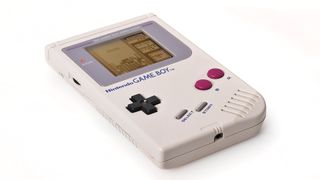
For graphics artist Elliot Curtis, the key reason why the Game Boy was such a sales success in the face of ‘superior’ competition was down to its gaming library. "It was Nintendo so it had the best games," he says. “Obviously Tetris shifted the units in the first place, but then you could also play Mario. Nintendo created games that worked well on a small screen with no colour. Everybody else seemed to be making versions of existing games that were inevitably inferior to the ‘proper’ version."
Programmer Ken Murfitt agrees: "Something that Nintendo understood well was that consumers enjoy straightforward products that are accessible, robust and low cost, but if I had to sum up the success of the Game Boy in one word it would be ‘Tetris’."
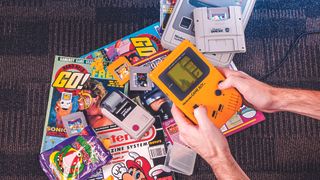
Interested in learning how the Game Boy has evolved over the years? Here we look back at all of its greatest redesigns
Having experienced the Game Boy before most, Jaz Rignall is ideally placed to comment on how it held up over time. Despite the arrival of flashier portables, his appreciation of the Game Boy did not diminish. "If anything, the more I played the competition the better Nintendo’s little grey brick looked," he says. "Anything with a colour screen ate batteries as fast as you could shovel them in. The Game Boy was relatively frugal, making it much friendlier on the pocket, energy-wise. It was also nicely designed. These days it looks hefty, but you could hold it and play it for hours comfortably."
"It was also built like a tank. The Lynx and Game Gear were fragile by comparison. I never had any qualms about bunging it into a bag and taking it anywhere. I loved the PC Engine GT but it was expensive, and some of its games were unplayable because they’d been designed for a big screen. It was also one of the all-time greats for consuming batteries. Ultimately it’s about the games and not the tech, and the Game Boy proved that. It had a range of really fun carts – and Tetris was a killer app."
So what now for Game Boy? While it is unlikely that we will see Nintendo return to the branding any time soon, the console's legacy certainly lives on in the 3DS and, of course, the Nintendo Switch.
If the success of those two handhelds proves anything, its that Nintendo hit upon a winning formula 30 years ago and the company has only continued to evolve and refine its original vision since. The Game Boy did so much for gaming, its the handheld device that changed it forever and its influence is still felt to this day.
Most Popular





